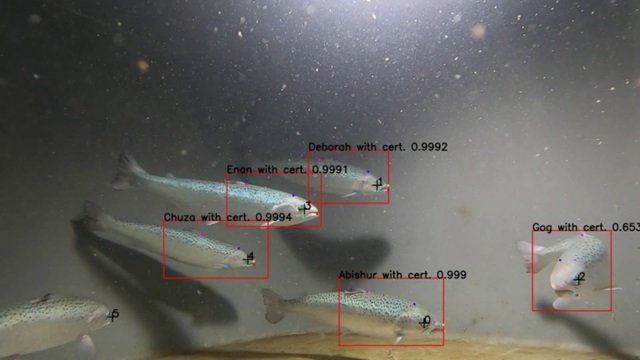Almost all commercially exploited species do not achieve the Good Environmental Status (GES). With the aim of identifying species, obtaining their sizes in the fish market to create a database to carry out an optimised management of fisheries, researchers from the University of Alicante Department of Computer and Information Technology, associated with the Institute of Coastal Ecology (IEL) and the collaboration of El Campello fishermen’s associations, have launched the DeepFish project.
DeepFish: Development of an artificial vision prototype for identifying species and obtaining biometric data in the fish market based on deep learning addresses a pioneering way to identify, in small-scale fishing catches and through computer vision and artificial intelligence (AI) techniques, the main fishing species and accidental catches in the area of the Cabo de Huertas, a Site of Community Interest (SCI) in the Levantine-Balearic region.
This SCI is an area included in the Natura 2000 Network, the European network for the protection of habitats and species of interest, which covers the Alicante coastline, from La Albufereta to almost the limit of El Campello with Villajoyosa, and its main marine habitat is the oceanic posidonia meadows.
In addition to the identification of species with Deep Learning techniques, researchers will obtain the sizes of the specimens in order to generate databases by species and size of all the specimens that pass through the fish market, thus enabling optimised fishery management by retrieving data on the main species in real time and size discrimination.
For this project, the IEL experts have decided to focus on the main species for artisan fishing in the Alicante town of El Campello. These, excluding cephalopods (octopus, cuttlefish), were the red mullet (Mullus surmuletus), whiting (Merlucius merlucius), dentex (Dentex dentex), sea bream (Sparus aurata) and pagel (Pagellus erythrinus), the most commercially overfished species.
DeepFish is led from the UA by Andrés Fuster Guilló, principal investigator and director of theresearch group Applied Intelligent Architecture (AIA) at the UA Department of Computer and Information Technology. This project is being developed throughout the year 2021 with the collaboration of the Biodiversity Foundation, of the Ministry for Ecological Transition and Demographic Challenge, through the Pleamar Programme, co-financed by the FEMP.
Methodology based on Artificial Intelligence and the use of algorithms
According to Andrés Fuster, they are going to focus on the El Campello fish market, in principle, as it is smaller and sells to the end customer, so this retail sale will make the capture of images and the identification of species easier. To be able to carry out this project, the researchers will work with different cameras, with the aim of making the system learn better in the image acquisition phase. Artificial intelligence algorithms will then automatically identify each fish found in the tray according to its species and size.
Stay Always Informed
Join our communities to instantly receive the most important news, reports, and analysis from the aquaculture industry.
In order to create the database, the research team will be accumulating daily data, so that the system will give a more reliable measure of what type of species are being fished in the area, what size, how many, etc., because the more information goes into this database, the higher the success rate they get with this system, as Fuster explained. Also, to identify the species, the members of the project belonging to the IEL are key, as they are the ones who will train the system, with a set of data (dataset) of labelled images.
Once the system is up and running, it will display a frequency for the species and sizes fished. These results will be used to study how the species are being exploited. The IEL scientists stress the relevance of the study as an effective tool for monitoring the natural balance of the populations of key species for the ecosystem. In addition, DeepFish will help to ensure that fish stocks are properly managed, so that they are kept within safe biological limits, paying special attention to those whose status is unknown, and to those that do not reach Good Environmental Status (GES) according to the initial assessment of the descriptor that refers to commercially exploited species in the Levantine-Balearic marine demarcation.
Source: Asociación RUVID
Editor at the digital magazine AquaHoy. He holds a degree in Aquaculture Biology from the National University of Santa (UNS) and a Master’s degree in Science and Innovation Management from the Polytechnic University of Valencia, with postgraduate diplomas in Business Innovation and Innovation Management. He possesses extensive experience in the aquaculture and fisheries sector, having led the Fisheries Innovation Unit of the National Program for Innovation in Fisheries and Aquaculture (PNIPA). He has served as a senior consultant in technology watch, an innovation project formulator and advisor, and a lecturer at UNS. He is a member of the Peruvian College of Biologists and was recognized by the World Aquaculture Society (WAS) in 2016 for his contribution to aquaculture.




